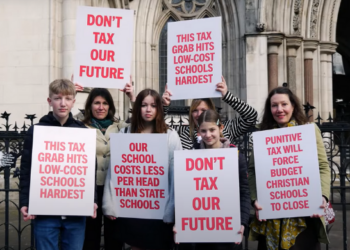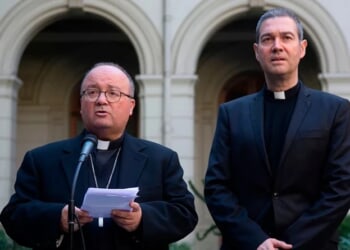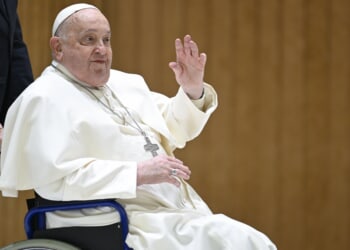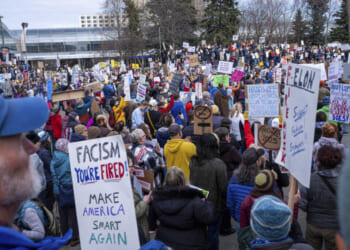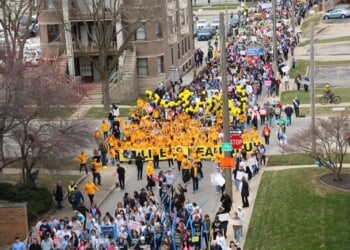CNA Staff, Apr 17, 2025 /
15:05 pm
The National Catholic Education Association (NCEA) this week released the annual report for Catholic school data, which among other things indicated that school choice is on the rise.
In the 2024-2025 school year, there were 1.6 million Catholic school students and more than 150,000 professional staff members, with a student to teacher ratio of about 11 to 1. Nearly 40% of Catholic schools had a waiting list.
This school year, 63 Catholic schools closed while 24 new Catholic schools opened. This is a slight increase in both closures and openings from last year but marks a continued break from the early 2000s trend, which averaged 130 Catholic school closures per year.
Of the 5,852 Catholic schools in the United States, 31% use parental school choice programs.
Sister Dale McDonald, a sister of the Presentation of the Blessed Virgin Mary and NCEA vice president of public policy, said that in states with “robust” school choice programs, “we have seen enrollment increases.”
The report highlighted that 18% of students use school choice programs, which is up by nearly 5% from last year.
In Arizona, Indiana, Iowa, and Oklahoma, more than half of Catholic school students used school choice programs, Sister Dale noted. In Florida and Ohio, it’s more than 80%.
“We firmly believe that parents, as primary educators of their children, have a right to choose what they see as the best option for the child and that choice should not be conditioned solely on zip code or annual salary,” Sister Dale told CNA.
Sister Dale noted that school choice programs “enable a more diverse population to attend our schools,” which “enhances our mission of promoting faith and scholarship in a Christian community.”
Three-quarters of Catholic schools serve students with a diagnosed disability and 9% of Catholic school students have a diagnosed disability — a percentage that has grown slightly but steadily in recent years.
In addition, about 15% of students are eligible for free or reduced lunch and 7% of students receive Title I services, a federal program designed to help struggling students in impoverished areas.
At Catholic schools, 60% of students are white, nearly 15% are Hispanic, nearly 8% are Black, and about 4% are Asian.
About 1 in 5 students attending Catholic schools are not Catholic, according to the report.
“Serving all students who want a Catholic education regardless of their religious affiliation has a long tradition within our mission, particularly serving the poor and marginalized,” Sister Dale said.
For instance, one historic Catholic school in a largely Protestant neighborhood in Cleveland has an all-Black, non-Catholic student body.
Recently released data revealed that Catholic schools surpassed public schools in reading and math testing scores, according to the Nation’s Report Card.
(Story continues below)
Subscribe to our daily newsletter
Sister Dale noted that these test scores consistently “have demonstrated that Catholic school students outperform their public school counterparts.”
For Sister Dale, this reflects “our commitment to educating the whole student, preparing him or her for leading a moral life and contributing to the common good.”
The association is currently advocating for the passage of the Educational Choice for Children Act, a proposed $10 billion nationwide school choice program.
Sister Dale said supporting school choice programs is all about “what is best for the child.”
NCEA President and CEO Steven F. Cheeseman noted that these data and trends “help tell the national story of Catholic education.”
“Our hope is that this data will empower our communities with clarity and purpose and inspire the continued growth of Catholic education for generations to come,” Cheeseman said in a statement shared with CNA.
“Together, we continue to shine the light of Christ through the lives we form every day.”




